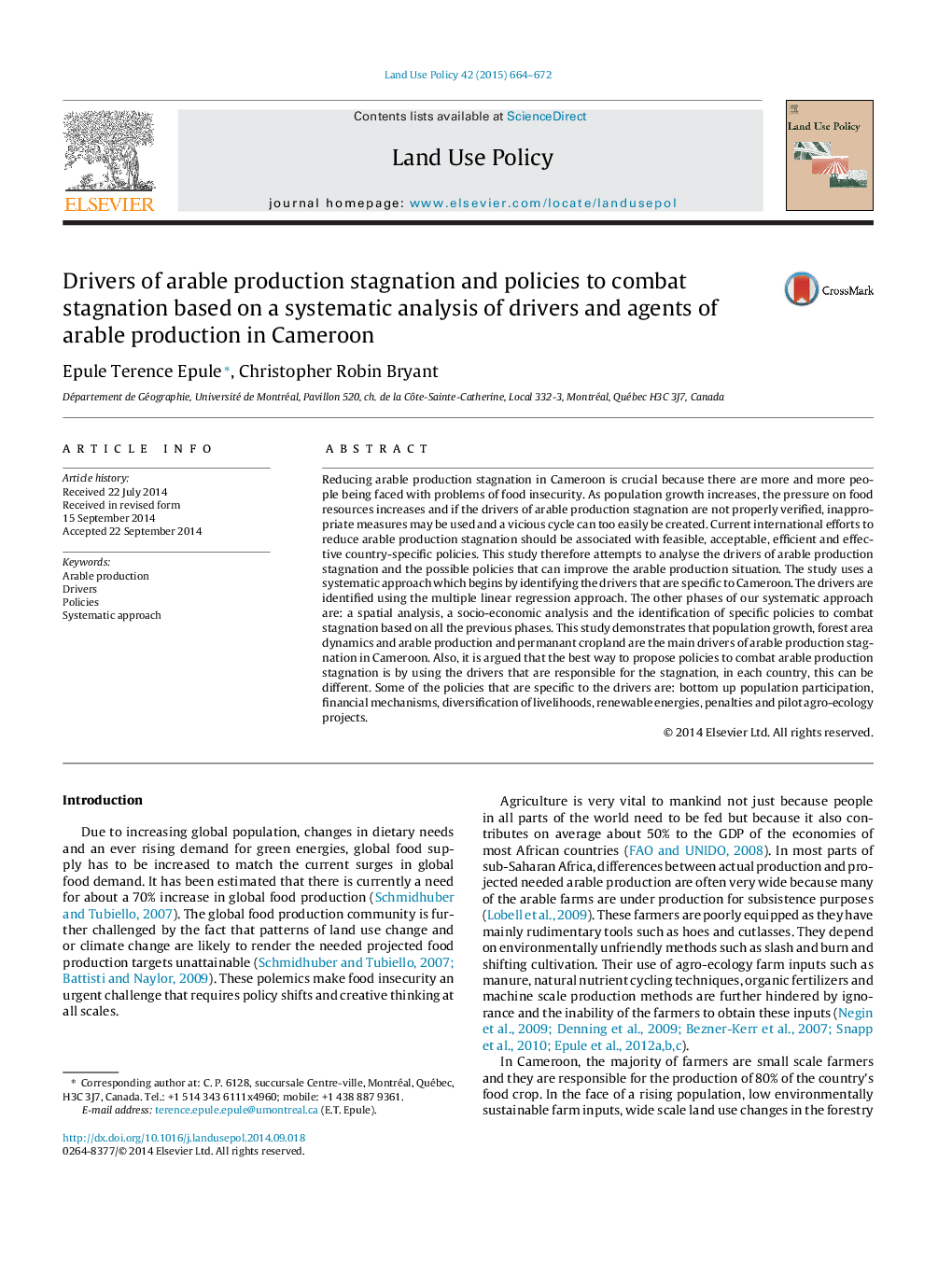| Article ID | Journal | Published Year | Pages | File Type |
|---|---|---|---|---|
| 6548496 | Land Use Policy | 2015 | 9 Pages |
Abstract
Reducing arable production stagnation in Cameroon is crucial because there are more and more people being faced with problems of food insecurity. As population growth increases, the pressure on food resources increases and if the drivers of arable production stagnation are not properly verified, inappropriate measures may be used and a vicious cycle can too easily be created. Current international efforts to reduce arable production stagnation should be associated with feasible, acceptable, efficient and effective country-specific policies. This study therefore attempts to analyse the drivers of arable production stagnation and the possible policies that can improve the arable production situation. The study uses a systematic approach which begins by identifying the drivers that are specific to Cameroon. The drivers are identified using the multiple linear regression approach. The other phases of our systematic approach are: a spatial analysis, a socio-economic analysis and the identification of specific policies to combat stagnation based on all the previous phases. This study demonstrates that population growth, forest area dynamics and arable production and permanant cropland are the main drivers of arable production stagnation in Cameroon. Also, it is argued that the best way to propose policies to combat arable production stagnation is by using the drivers that are responsible for the stagnation, in each country, this can be different. Some of the policies that are specific to the drivers are: bottom up population participation, financial mechanisms, diversification of livelihoods, renewable energies, penalties and pilot agro-ecology projects.
Keywords
Related Topics
Life Sciences
Agricultural and Biological Sciences
Forestry
Authors
Epule Terence Epule, Christopher Robin Bryant,
